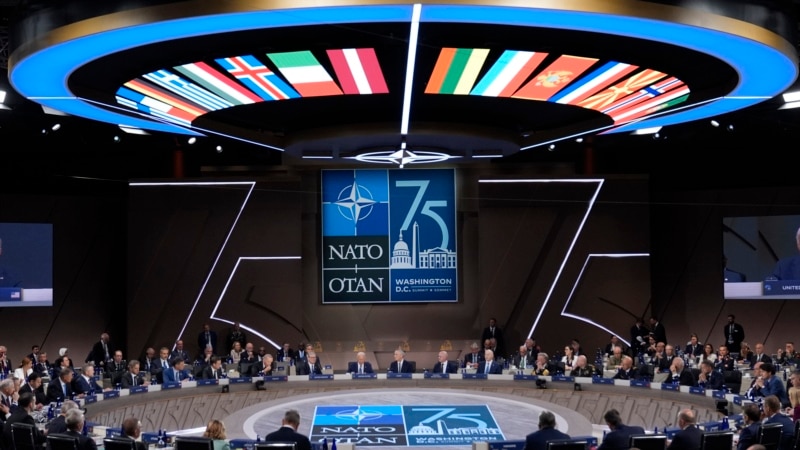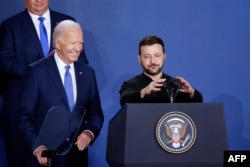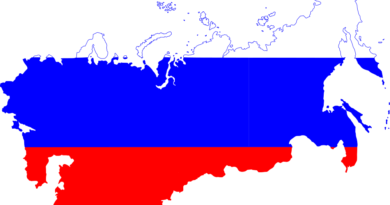China depicts NATO as peace-threatening alliance while holding military drills on member’s border
Chinese state media targeted the North Atlantic Treaty Organization (NATO) summit in Washington this week with propaganda and disinformation portraying the alliance as serving only the interests of the United States and as a threat to world peace.
The 32 NATO member state leaders met at the birthplace of the alliance to mark its 75th anniversary and to make the “key decision on how to continue protecting its one billion citizens as the world faces the most dangerous security environment since the Cold War,” NATO said.
NATO called Russia the most “significant and direct threat to Allies’ security,” saying Moscow “has shattered peace and stability in the Euro-Atlantic area” through its war in Ukraine.
Russia’s deadly July 8 strike on a children’s hospital in Kyiv underscored that characterization.
NATO reaffirmed its commitment to helping Ukraine maintain its independence, sovereignty and territorial integrity, including by sending to Kyiv air defense systems and providing other forms of training and support.
NATO said China remains “a decisive enabler of Russia’s war against Ukraine,” and “continues to pose systemic challenges to Euro-Atlantic security.”
And U.S. Secretary of State Antony Blinken called China a “major contributor to Russia’s defense industrial base, thus enabling Moscow “to sustain its aggression against Ukraine.”
Beijing responded by amplifying the Kremlin’s propaganda point that NATO, not Russia, is the force preventing peace in Ukraine.
China also held military drills in Belarus, a staunch Russia ally, along the borders of a NATO member, Poland.
Chinese state media, diplomats and officials have been in lockstep, spreading the message that NATO is ultimately to blame for Russian aggression, antagonizing China, and undermining global security.
China’s Xinhua News Agency, for example, reported:
“Yet, more than two years into the Ukraine-Russia conflict, peace still appears distant, serving as an example that the coalition [NATO] is not promoting peace but rather threatening it.”
That is false.
Russian President Vladimir Putin preconditions any potential peace talks on Kyiv’s capitulation and surrender of one fifth of its sovereign territory. Putin and a range of his civilian and military officials are wanted by the International Criminal Court on charges of committing war crimes in Ukraine.
The United Nations International Court of Justice rejected Russia’s pretext for its February 2022 invasion of Ukraine, which U.S. national security adviser Jake Sullivan and others call “a war of choice.”
Russia first invaded Ukraine and illegally annexed its Crimea peninsula in 2014, when Ukraine had already abandoned its NATO ambitions by passing a law codifying its status as a military nonaligned country in 2010.
Sources close to the Russian leadership told Reuters in September 2022 that Putin rejected a provisional peace plan that would have kept Ukraine out of NATO. Russia disputes that.
Russia and its allies have also seized on a draft peace treaty between Russia and Ukraine from 2022, claiming it was Kyiv and its allies who rejected peace.
But a copy of that draft treaty shows Ukraine was willing to make concessions, including forgoing NATO membership and becoming a “permanently neutral state.”
Moscow’s insistence it could veto any military intervention from Ukraine’s allies in the event Russia invaded again sabotaged those negotiations.
Analysts at The Institute for the Study of War, a Washington-based think tank, argue that Putin invaded Ukraine because he believed “NATO was weak” and that he would not face significant Western resistance in pursuing his goal of establishing “Russian control over Ukraine.”
Putin, they argue, opposed the West presenting an “alternative path” to countries he believed Moscow had a right to influence or control.
Analysts and Western officials argue Russian aggression against Ukraine persisted because NATO feared direct contact with Moscow, resulting in the slow drip of aid and restrictions on how Ukraine used supplied arms.
Since invading, Russia has also moved air defenses and troops away from its borders with NATO member states, suggesting Russia does not fear military confrontation with the alliance.
Kyiv says Moscow seeks the complete destruction of the Ukrainian state and eradication of Ukrainian identity.
Russian state media and officials have also repeatedly signaled that Russia seeks the destruction of Ukraine.
On July 10, former President Dmitry Medvedev, now deputy chair of the Russian Security Council, said even if Ukraine fully capitulated to Russia’s demands and abandoned its NATO ambitions, Moscow would still be compelled to destroy Ukrainian statehood and absorb all its territory into Russia.




